I’ve collected all my crochet and amigurumi tutorials into this master list! My tutorials take two forms: videos or step-by-step photos with written instructions.
 |
All video tutorials include both right- and left-handed versions on the same page. |

 |
As photo tutorials take up more screen space, some are split into separate right-handed (RH) and left-handed (LH) pages, and you’ll see both links below, in those cases. |
Scroll down through the tutorial list, or jump to a specific section:
Note: If you’re having a specific problem, check my
Amigurumi Troubleshooter first, to find out which of these tutorials many solve your problem!
Amigurumi Essentials
To make great amigurumi, you need these techniques!
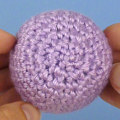
Ultimate Finish for Amigurumi
Close up the remaining hole neatly with a smooth, gap-free finish.


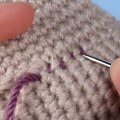
Amigurumi Seamless Join
Create a smooth, almost invisible join when you stitch an open-ended piece to a closed piece.

Back to top
Basics
New to crochet or amigurumi? Start here first.
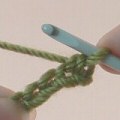
Crochet Basics
Basic crochet stitches for amigurumi.


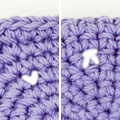
Which is the ‘Right’ Side?
Which side of your work should face outwards? (And does it matter?)


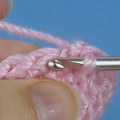
Front, Back, Both Loops
Which loop(s) should you work into to make a crochet stitch?


Stitch Tension
How to get perfect neat small stitches (without hurting your hands by crocheting extra-tightly!)


Using Stitch Markers
How to use stitch markers in amigurumi, to mark the first stitch of your round or to mark a specific point.

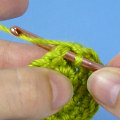
Yarn Over
How exactly should you wrap the yarn over your hook for crochet?

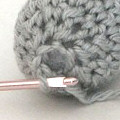
Fastening Off
How to fasten off open and closed pieces in amigurumi.

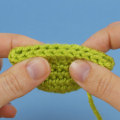
Flattened Pieces
What does it mean when a pattern says to flatten a piece of an amigurumi after crocheting?

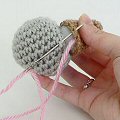
Joining Amigurumi
The basic method for stitching open-ended pieces to closed pieces.

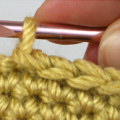
Chains and Slip Stitches
Are your chs and sl sts difficult to work into? Learn how to avoid this.

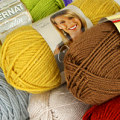
Worsted Weight Yarn Comparison
What is ‘worsted weight’ yarn, and are all worsted weight yarns the same? I’ve compared dozens of ww acrylic yarns for you!

Back to top
Perfect Finish
Tips to get a neater result from any amigurumi pattern.
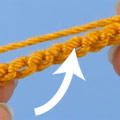
Crochet into the Back Bumps of a Chain
This technique gives you a very neat bottom edge, with a row of Vs across the bottom of your piece.

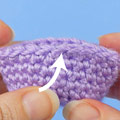
Invisible Finish for Open Edges in Amigurumi
How to make an invisible join at the end of the last round of an open-ended piece in amigurumi.

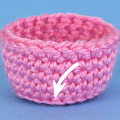
Better Back Loop Only Details
A better way to make back loop only details in amigurumi, eliminating the holes below the BLO stitches.

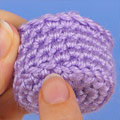
Jogless Back Loop Only Round
A simple modification to minimise the jog between the start and end of a back loop only round.

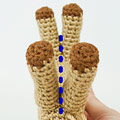
Attaching Legs Evenly on a Standing Amigurumi Animal
Attach legs neatly and evenly so the animal can stand straight, with all four feet touching the ground.

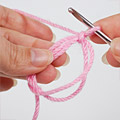
Double Ring
A more secure version of the magic ring for crocheting in the round.

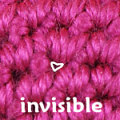
Invisible Increase
Reduce the size of the hole created by your sc increases with this optional technique.

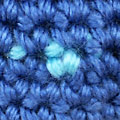
Perfect your Invisible Decreases
Are your invdecs not as ‘invisible’ as advertised? Let’s fix that!

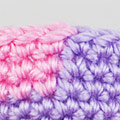
Changing Colour: Managing the Yarns
How to deal with the other yarn when you work with more than one colour.

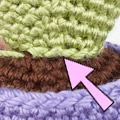
Amigurumi Clean Edge Join
How to make a neat join with a straight, clearly defined edge between two pieces (even if they’re different colours).


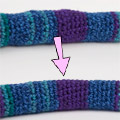
Fix lumpy stuffing
My pinch-and-push technique to make your stuffing more smooth and even.

Back to top
Embellishment
Add features to your amigurumi.
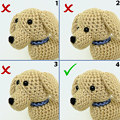
Positioning Amigurumi Eyes
Guidelines for positioning eyes on your amigurumi animals to give a realistic result.

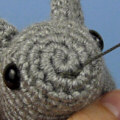
Amigurumi Faces: Secure Stitching
Easily hide the starting and ending tails of your thread and keep your stitches secure when embroidering noses etc onto amigurumi faces.

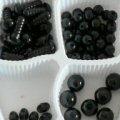
Eyes & Noses
A rundown of options for creating eyes and noses for your amigurumi.

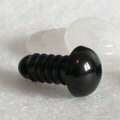
Eye Sources
Online sources for two-part animal eyes (aka
safety eyes or
craft eyes) for amigurumi.

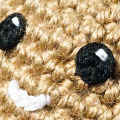
Glinting Eyes for Amigurumi
A technique that brings your amigurumi to life when you don’t use shiny plastic eyes.

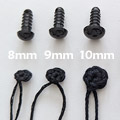
Crocheted Eyes for Amigurumi
Crocheted eyes can be a great child-safe (and pet-safe) alternative to plastic eyes.

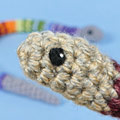
Tiny Yarn Eyes for Amigurumi
An embroidery-free foolproof method for making tiny yarn eyes, spots and dots for amigurumi.

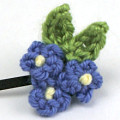
Crocheted Embellishments
How to securely attach multiple embellishments so you can make custom accessories (appliqués, brooches, hair decorations, etc).

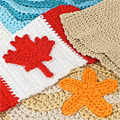
How to Attach Crochet Appliques
How to make strong, decorative yarn-wrapped stems that match the look of your crocheted flowers, so you can display them in a vase or bouquet.


Easy Yarn-Wrapped Stem for Crochet Flowers
How to make strong, decorative yarn-wrapped stems that match the look of your crocheted flowers, so you can display them in a vase or bouquet.

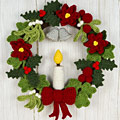
How to Design and Arrange a Crocheted Wreath
A wreath can be a lovely way to display small crocheted amigurumi, appliques and other embellishments, to celebrate an occasion or just to look pretty.

Back to top
Speciality
Advanced or less common techniques.
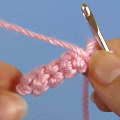
Narrow Pointed Tubes for Amigurumi
My tips for making thin pointy bits on amigurumi, such as spikes, legs, horns and tails.

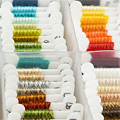
Yarn Colour Swatch Box
If you have lots of amigurumi yarns, try making a box of yarn swatches so you can see at a glance all the yarns you have available.

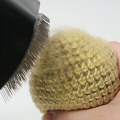
Brushed Amigurumi
How to create a fluffy crocheted animal with regular yarn by brushing the pieces after crocheting.

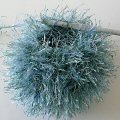
Fuzzy Yarn Tips
Advice on how to crochet amigurumi toys using fuzzy (aka
eyelash or
novelty) yarns.

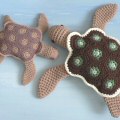
Resizing Amigurumi
How to adjust a pattern to scale the finished amigurumi up or down in size while keeping it in proportion.


Make ‘Baby’ Amigurumi Animals
How to convert almost any animal pattern to make a baby version – with no pattern modifications.

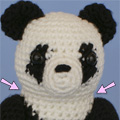
Needlesculpting
Improve the shape of your amigurumi with this finishing technique, using only a yarn needle and length of matching yarn.

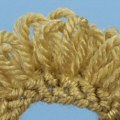
Crochet Loop Stitch
Loop stitch (aka
fur stitch) is a decorative stitch with an added long loop of yarn formed on the back of the work.

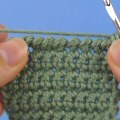
Reverse Single Crochet
Reverse single crochet (aka
crab stitch) makes a decorative twisted cord edging for your crochet.

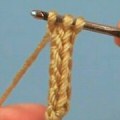
Crocheted i-cord
Non-knitters can create i-cord (typically knitted) with a crochet hook – it’s an easy way to make fine tubes.

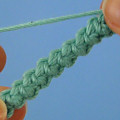
Basic Crochet Cord
This decorative cord makes a strong flattened non-stretchy braid. It’s easy to crochet as it uses only single crochet stitches!

Is something missing? I’m building this page into a reference library of crochet tips and techniques, and I’m always happy to hear your requests and ideas for new tutorials I can make! Let me know if you have requests for additional technique or stitch tutorials.
Try more free PlanetJune content!










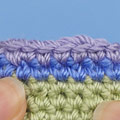




























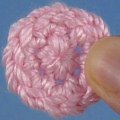



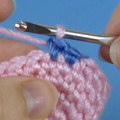






























Valerie said
What am I doing wrong? I am working on a beanie ending with, join in top of beginning ch 3. Ch 3 hdc in next st. There is a crooked seam look to this beanie. Shouldn’t the join sl st in the beginning ch 3 be straight down the back? I hope you can help me 🙁
Ashley said
Hi June,
Amigurumi is such a cute hobby to start! I have been having difficulties finding a “beginners tool kit” online – can you send me in the right direction? I’d love to start as soon as I can 🙂
Thanks!
June said
Ashley, you might like to take a look at my Amigurumi Accessory Kit – it has everything you need apart from the basics (hook, yarn, stuffing, yarn needle, scissors) that you can pick up at any craft store!
Crochethappy said
That is not really my email… There is no comcast.com but hey! Who cares! What I want to know is how to make the amigurumi legs ( like the skinny kind). I am having trouble trying to create then so help would rock! Luv your work by the way. Awesome. Simply awesome.
June said
I’m afraid I don’t know what you mean by the skinny kind of legs. I’d email you to ask, but you gave me a fake email address…
Marcia said
Hi June
First of all congratulations for your great work.
Daianna is getting merry next december and she love very much the wedding couple little birds. Since she cant afford buy them she is asking you to post the wedding birds pattern. Hoping help you both.
Daianna said
Oie!Me caso agora em dezembro e gostaria de pedir a receita dos pombinhos!!!Ameeeeei mas
June said
(Thank you Marcia, for translating Daianna’s message for me!)
Daianna, I hope you can read my response in English, as I don’t speak Portugese at all! I’ve never made a dove pattern, so I don’t have one to share with you. I’d be happy to design a pair of wedding doves for you if you’d like to commission me, but I’m afraid I can’t do that for free. If you’re interested, please email me (june@planetjune.com) and we can figure out the details of the commission. If not, I hope you can find an alternative idea. Either way, have a lovely wedding!
Cheryl said
Hello,
I love your patterns!! You are so talented!!
I bought your ami-boxer pattern and am confused on the ears. If I follow the pattern and make a magic ring….how does the ear end up looking like yours? I have made it following your instructions and it ends up looking like a cup!! I have been crocheting for 40 years and ears always seem to be my downfall.
Thank you!
Any help you can give me would be greatly appreciated!
June said
Cheryl, you’ll need to flatten each ear with the magic ring at the tip – look at Figure 5 (p6) to see the initial shape of the ear. (The magic ring is at the top of the ears in Figure 5.) If your ear looks like a cup it may be that you didn’t notice the repeats (Rnds 5-8) on the Ear instructions – it should be an elongated shape after crocheting it and before you flatten it. If you still have problems, email me a photo of your ear and I’ll be happy to advise 🙂
Lynn said
I’ve been a long time fan of your site and appreciate all the tips and suggestions you have that are so easy to follow 🙂
I’m working on a project where someone likes a doll I made, but they want it twice as large. What are my options for doubling it’s size? I had a lot of headache laying out the stitches for my current pattern so I feel more than a bit intimidated about scaling them. I’ve seen elsewhere mention the simplest option being to double the yarn or use a thicker yarn and a larger hook, but what size hook should I go to in such a case? Currently I’m using a size G.
Thank you for taking the time to read and reply.
June said
Lynn, I’ve written a post about just this topic! www.planetjune.com/blog/sizing-up-and-down/
If you look at Method 3 there, that’s exactly what you were planning to do: double the yarn and go from a G hook to a larger hook. I used an L, so you could probably do the same. The bad news (for you) is that it only increased the size of the finished piece by 1.5x, not 2. And of course the stitches are much chunkier and the gaps between each stitch are much larger – I don’t think I’d use this method with any thicker yarn and hook than that. I think to go as large as twice the size, I’d just start over with a new pattern – sorry I don’t have better news for you! But read my post anyway – it may give you some ideas for how to tackle it. Good luck!
Lynn said
Thank you very much for your experienced knowledge! 🙂
Tinka said
Hello June,
Thank you for taking the time to post such great tutorials. Your apple pattern was one of the very first patterns I ever followed when first learning to crochet.
Would you consider doing a tutorial on crocheting in the round…not as a spiral, but as rounds? I have trouble with that awful seam. It’s crooked too!
Thanks
Tinka
June said
I agree about the seam, Tinka… there’s a reason why I don’t use joined rounds in my patterns, unless I can help it! I won’t create tutorials for techniques I don’t use or recommend, but I do have techniques for joined rounds as part of my Perfect Stripes video tutorial – to make neatly-joined rounds, you could follow one of my methods (I’d recommend the No-Cut Join in this case) and just not change colour 🙂
Nancy said
Hello – I am fairly new to crocheting and infatuated with the Amigurumi dolls.
So happy I found your site and know I will be using it a lot! And I’ll be getting your new book too.
I am working on my first project it’s a larger frog the finished product should be 9″.
As I stuff the pieces I’ve finished I see stuffing through my stitches.
This toy is for my 15 month old Grandson and I’m afraid he could pull it out.
What do you suggest I do?
Thank you!
Nancy
June said
Nancy, the key to amigurumi is to crochet tightly to produce a firm fabric with small gaps that the stuffing won’t show through. To do this, you need to use a smaller hook than is recommended for your yarn – typically at least 1-2 sizes smaller, but possibly smaller still if you crochet loosely. For example, with worsted weight yarn, which may recommend an H hook (5mm) or larger, I use an E hook (3.5mm).
Unless you want to restart your frog with a smaller hook, it’s too late to fix it after the fact, but what you could do is make a little bag from the toe end of an old pair of hose or stockings, and use that as a liner inside the frog. You’ll need one bag for each piece of the frog. Put the stuffing inside the bag, tie a knot in the open end, and at least the stuffing will all stay contained, even if you can see the bag between your crocheted stitches!
Nancy said
Thank you June! I am impressed & thrilled that you answered me so fast..
I wish I found you before I started! That’s a great idea about using “toes of hose” for stuffing. I will try it I’d hate to start all over then again I want it done right..
Thanks again!
Nancy
Tracy said
Hi June,
First off I wanted to thank you for your very helpful guides, I wouldn’t have accomplished the magic ring without you! I have been looking for your book in the local stores but haven’t found it yet so I was wondering if you can give insight on something. I am working on my first amigurumi and I’ve noticed that some patterns I have seen call for a slip stitch at the end of a round then a chain stitch at the beginning of the next, in addition to the sc stitches (e.g.1st round: 2 sc into every sc (of a 5 stitch magic ring) to end up with 10st, slip stitch, then 2nd round: ch 1. 1 sc into every sc (10 st). I might be missing something but this always seems to give me an extra stitch at the end. Can you shed any light on what I may be doing wrong?
June said
Hi Tracy, yep I can help with that! The ch 1 at the start of the rnd and the sl st at the end don’t count as stitches unless the pattern specifically says to do so. So, here’ how to avoid gaining a stitch every round:
That looks like a lot but try following the instructions as you crochet and you’ll see it’s easy – just mark the first sc of each round and you can never go far wrong!
Juliana Brandelli said
Do you send it to Brazil?
June said
Yes, Juliana, you can download your patterns as soon as you’ve paid – from anywhere in the world!
Parthenis said
Hi June !
First I want to thank you for your wonderful tutorials. I learnt all about amigurumi thanks to it ! And I’m very happy I can make my way in this new world of absolute cuteness *_*
So here’s my demand : could I traduce your tutorials for some friends of mine who don’t understand English well ? (Yeah, I’m French. My apologies for my strange sentences XD) Of course I’ll credit you with a link to this page ^^
Long life to this blog !
Parthenis
Parthenis said
It’s not “traduce” but “translate” u_u” Don’t know why I said that…
Amy said
Hi June,
I am enjoying your book, The Complete Idiot’s Guide to Amigurumi. I am a newbie and I am also left handed. Your crochet basics and magic ring tutorials for lefties are so helpful to me. Thanks!
giocondabarahona said
me gusta mucho el tegido tus ense
Nickie said
Arn’t you going to answer my two previous questions?
June said
Nickie, I do apologise – I thought I’d replied to these already!
1) I’m very busy at the moment packing up to move to South Africa, so I have no plans for another CAL at the moment.
2) No, I wouldn’t call the gecko beginner-ish – the legs are very thin tubes which are a bit tricky to make, and the feet are a bit fiddly too. I’d stick to patterns made with basic, simple looking shapes (nothing with very fine detail and tiny pieces) until you get some confidence with your amigurumi making.
If you have any more questions, just email them to me (june@planetjune.com)! That way, I’m much less likely to lose track of your questions if I don’t have time to reply immediately 🙂
Nickie said
Would the gecko be considered begginerish? Sorry if i am taking up your time with my questions- i just have so many!
Nickie said
When is your next CAL? I would like to give it a try.
Nickie said
Which pattern would you say is the easiest? I am just a begginer, and want to make a couple of whatever pattern I purchase. What would you suggest?
June said
Nickie, that question is on my to-do list of things to add to the FAQ!
My PocketAmi Sets 1 & 2 are designed especially for beginners (that’s the link to buy both sets together; you can also buy them as 2 sets of 3 each if you’d prefer). They are small so don’t take long to crochet, and they have no colour changes and few pieces to stitch together, so they’re really good for beginners 🙂
Then you could move onto some of my larger patterns that don’t have any colour changes, for example my Dolphin and Dachshund would both be quite easy.
Hope that helps!
anndelise said
Like Rue above me, I too am wondering how to do the stagger increase for a flat circle.
June said
Thanks for the reminder – I’ve replied (above) now 🙂
anndelise said
Thank you so much.
btw, beginner crocheter here, and I love learning things the way your book teaches. Learning how to create my own parts, and problem solving with yarn and hook, rather than be stuck following other people’s patterns is the way I prefer to learn. I not only purchased this book for myself, but also for my friend who first showed me a book on amigurumi critters.
My only other question is…would you consider a similar style book for clothing and/or accessories? 😉
Anyways, thank you so much for taking the approach you did with your book. It is definitely one I will recommend to any crocheters I know who might be interested in making amigurumi.
And thank you also for being so responsive to the question.
ann
June said
You’re very welcome, and I’d love to write the clothing/accessories book you suggest! I just have to get my move to South Africa out of the way first, and then we’ll see what happens 🙂
Rue said
Hi june!
I just bought your book from Amazon.com, and I was wondering on how to do stagger increase. I know that by staggered increases result in circular and not hexagonal crcochet, but how do you do it?
June said
Okay. When you look at a typical amigurumi pattern for a flat circle shape, it’ll look something like this (I’ve skipped the first few rounds here):
Rnd 4: (2 sc in next st, sc in next 2 st) six times
Rnd 5: (2 sc in next st, sc in next 3 st) six times
Rnd 6: (2 sc in next st, sc in next 4 st) six times
Rnd 7: (2 sc in next st, sc in next 5 st) six times
As you can see, the increases (the ‘2 sc’s) are all at the beginning of each repeat, so they all end up stacked on top of each other. As the circle continues to grow, the increases tend to form a hexagonal shape, with the corners of the hexagon at the increase points. (For anyone else who’s reading this, you can see an example on p61 of The Complete Idiot’s Guide to Amigurumi).
To prevent this you need to stagger the increases by moving them within the repeat. So, for example, in Rnd 6, each repeat has one increase and 4 single crochets worked even. Instead of crocheting (2 sc in next st, sc in next 4 st), you could move the increase so you crochet (sc in next 2 st, 2 sc in next st, sc in next 2 st), then repeat that around the circle for that round.
You need to still end up with the same number of stitches at the end of the round, and space out the increases around the circle, but by moving the position of the increase within the brackets (..) and then repeating your new pattern around the circle for the whole round, it’ll all work out properly.
Move the increases for some, but not all, the rounds, so that each round has increases at different points around the circle, and because the increases are no longer stacked on top of each other, you’ll avoid creating a hexagonal shape instead of a circle!
Renee said
Hi June! I purchased your rhino pattern and it turned out so cute!
I made a hippo from the Lion Brand booklet and its a bit bigger than the rhino…how should I increase stitches in the rhino pattern to make it more proportionate to the hippo? The hippo is about 6 inches long, while my rhino came out to be 4 1/2 inches long. There’s about an inch difference in the width too.
Id appreciate any advice you can give.
Thank you!
June said
Renee, unfortunately there’s no easy way to modify a pattern to enlarge it. See my post on Sizing Up (and Down) for some methods you could try – I’d recommend you use a thicker yarn (or two strands held together) and a larger hook to increase the size of the rhino.
MamaJunke said
My 16yr old daughter is taking a trip to Costa Rica for spring break this year with a group from school. One of the places she is looking forward to going is the Sea Turtle Preserve, I think I’m going to need to get this pattern and get cracking! Beautiful, beautiful work!
Nola Porter said
LOVE this site, I have gone from never doing a single stitch of crochet to making the most adorable little things for my daughter to play with – so Thank you *very* much for the awesome tutorials!!! One question about stuffing though, I see that some people use pellets to weight down the bums and sometimes feet of their toys, but I can’t seem to figure out where to buy them, or what they are put in so that they don’t fall through the holes in the crochet, LOL! Any help with this would be much appreciated! =)
Thanks again!
Nola :o)
June said
Hi Nola! You can buy the pellets from most large craft stores, although they can sometimes be well-hidden! Try looking in the aisle with toy stuffing, or with doll-making supplies. The pellets come in a big bag that’s quite expensive but lasts for ages. To stop them from falling out through the holes between your crochet stitches, try making a little bag by cutting off the toe end of an old pair of nylons, pouring in the pellets, and then tying it off 🙂
Barbara Muirhead said
Hi,
I am struggling a bit with the Christmas Tree pattern – I am a beginner so it’s not the pattern it’s me :-(. I am managing to make the bobbles but they are so tight the piece almost looks felted. Also should I be going through the whole stitch or just into the front when making rounds. Any other hints or tips that could help me out ? I have managed to get as far as the second bobble round each time I try but then give up as I can’t get the hook through.
Thank you, Barbara
June said
Hi Barbara,
Sorry to hear you’re having difficulties! You should be going into both loops of the stitch, but if it’s easier for you to go into the front loops, that would be okay too. If you’re finding everything too tight, it may be that you crochet very tightly. You can either try to relax your tension on the yarn, or (and this will be easier to accomplish!) try switching to a larger hook, which should make your stitches looser and easier to crochet into.
I hope that helps – good luck! If you’re still stuck, just email me and I’ll be happy to try to offer further suggestions….
June
Barbara Muirhead said
Thanks June – you are a star! I have gone all the way up to an ‘H’ hook and tried my best to relax my stitches a bit – I am now on round 12 and am finding it much easier to see my stitches. Once I get the hang of it I’ll try going down a size.
Iida said
Hi June! How will I be able to do the most simple round ball, because I would like to learn, and I have not found any records that would help. I want to do such —> farm1.static.flickr.com/58/184463480_0884aa
I hope you answer soon : )
June said
Iida, the link you sent doesn’t work 🙁 I don’t know what type or size of ball you’re looking for, so here’s some general advice. There are 2 ways to make a ball:
1) Crochet two hemispheres (half-ball shapes) and stitch them together, adding stuffing before you finish the stitching. Here‘s a pattern that uses that method.
2) Crochet the ball as one piece; here‘s a PDF (scroll to the bottom of the post and click the PDF link) that shows how to make a perfect sphere in different sizes.
As you can see from the link, making a perfect ball is not simple! But if you don’t want to be that precise, your best bet is to find a pattern that includes a similar shape, and learn from that. Good luck!
4 strings 4 Him said
What is a ‘magic ring’?
June said
Find out here: www.planetjune.com/magicring 🙂
Tina said
Hi – just wanted to say now that I’ve made several of your patterns that I really appreciate how well illustrated they are. Most patterns (both crochet and knit) tend to only have pictures of the finished item, but yours have pictures of the more complicated assembly steps in addition to very specific instructions on how the pieces go together. This is very helpful, so thanks for being so thorough!
Kelly Soo said
Hi June,
A few weeks back I came around your blog or website telling me that I can buy a little tool that you use to stuff the amigurumi. May I know where is the link again? I am looking into purchasing those prong like tool to stuff my dolls.
Thank you.
Kell
June said
Hi Kell, the link is www.planetjune.com/tool 🙂
aisushi said
I’m interested in seeing a joining rounds tutorial from you. I’ve seen others, but your tutorials always seem to make everything neater, LOL. I have a pattern which calls for joining rounds, and my result was fugleh. =( I’ve been practising and trying out some stuff, but I’m hoping for some tips from you, haha. Thanks for all the great tutorials!
Liz A. said
Can you post a tutorial on how to make hair for an amigurumi doll? 🙂 I’m having trouble getting it to look right.
June said
I’m sorry, Liz – I’ve actually written lots of amigurumi hair information and tutorials, but they are for my new book (The Complete Idiot’s Guide to Amigurumi) which will be released in October. If you can wait that long, I promise you won’t regret it!
Liz A. said
Awesome! I’ll try and get it when it comes out!
Maja Klittegaard said
I love your turotials its usefull even thoug I have been chroching for a while. I still have problems with joining rounds. I just go round and round.
This is mostly an idea for another tutorial.
Many thanks
From Maja
June said
For amigurumi, you should just be going round and round! The only time you really need to join rounds is if you’re doing a striped pattern, to avoid the ‘jog’ of colour at the end of a spiral round. Usually you can just hide those jogs at the back of the piece anyway, and just keep spiralling – it’s so much easier 🙂
sarah said
Just wondering…can you make pattern for a manatee?
SparklyShiny said
June – thanks for the comments and links to your tutorials! My great-aunt taught me to crochet when I was about 10 — and after about a month I promptly forgot. When I was in college I picked it up again and relearned from a couple of books. After tweeting with you this afternoon, I pulled out some older work and I’ve come to the conclusion that I’ve never done a regular single crochet before! My afghans and doilies seem to work the majority of new rows into chain, DC and TC spaces (very lacy stuff). So thanks for telling me I’ve been doing the single crochet wrong – I never would have noticed! Doh! Thank you for the tutorials – I have read them all now and have a much better understanding of how my finished products will look. Your patterns work up beautifully (even though I worked them in back loops only) and I can’t wait to try the next one . . . and the next one.
June said
You’re very welcome – I’m so happy I could help!
June said
Shelly: good question! The most commonly used yarn is a worsted weight, and the most commonly used hook is a size E (3.5mm). If you can’t find an E, an F (3.75mm) would also be fine 🙂
Other essentials: a metal yarn needle and a stitch marker or two. I’d also recommend plastic animal (safety) eyes, although the size you need depends on the size of amigurumi you’re planning to make! If you’d like to buy eyes and stitch markers, they can be hard to find in stores, but I sell both in my shop.
Hope that helps! And welcome to the wonderful world of amigurumi 😀
Shelly said
Hi June!
Well I have just been hooked into the world of amigurumi..My moms old co worker was a pro at this! I haven’t bought any of the materials so I want to know what you would recommend (yarn/hook size/ ANYTHING!) I should buy.. I wanted to know if there was a hook size that would work for practically everything..
Thanks,
Shelly
June said
Julie: a well-written pattern won’t join a closed piece to another closed piece. Either the head or the body (or both) should be left open at the neck so the other piece can nestle against it and you can sew them together that way. The only other options, if you really want to join 2 closed pieces are:
1) Squash the 2 pieces together so they are touching in a neck-width circle, not just at one point, then sew them together all around the circle where they are touching, keeping them squashed together the whole time.
2) Crochet a short neck piece that’s a cylinder (open at both ends), then stitch it to the top of the body. Insert a little stuffing into the neck if necessary, then balance the head on top and attach it to the neck. This would work well for something with a long neck (e.g. a horse or giraffe) but not so well for a little bear or something that doesn’t really have a noticeable neck.
But in general, design the pieces so one edge is always left open, and you won’t have this problem in the first place!
Julie said
What about joining heads and bodies? Closed to closed things. I usually end up with wobbly heads or ugly looking necks.
Kira said
I still cant figure out the magic circle!! 🙁 I need to use it for the saftey cone pattern from aliciakachmar.com but I cant figure it out :'(
Bell said
Thank you so much for putting up your Amigurumi tutorials! I am a crochet beginner and found your instructions and photos really helpful. Especially the tutorial on joining it all up. I’m going to try your Fuzzy Kitten and/or a AmiDog Jack Russell next! All of your patterns look so adorable!
teerose said
love your work. Am new at amigurumi (email and tell me how to SAY it
so far, have made little mouse. any suggestions for a beginner. your tutorials are a big help
thanks
rose
skrunkycat said
How to finish?
What do you do with your spare yarn ends once your piece is the required size? I don’t know how to tie it all off so it won’t unravel… Please help!
SephXIII said
Hi. An absolute newbie here and I’ve a question. What hook size do you use with your work? I noticed in your fuzzy yarn tutorial, you seeming use the same size hook as the ones in your other tutorials. I’m at a loss at what hook type to buy as the yarns sold locally do not provide any recommendations on hook size, and all the ones I’ve seen are a lot smaller than yours (more for crochet yarns than the thick ones you’ve been working with).
Thanks in advance.
June said
Seph: I use different hooks sizes depending on the yarn I’m working with. Here are my top recommendations:
Worsted weight yarn: size E US/3.5mm
Bulky weight yarn: size G7 US/4.5mm
Fuzzy yarn: size H US/5mm
Depending on the actual yarn I’m using, I might sometimes use an F (3.75mm) or G (4mm) hook too, but I haven’t used anything smaller than an E or larger than an H in my designs. So if you pick up some hooks within that range (3.5mm – 5mm) you will probably be covered for any amigurumi-type work you’d like to make!
June said
Michelle: many amigurumi patterns are written so that the body is not closed – you work from the bottom up, and the body remains open at the neck. You close up that gap later by resting the head on top of the opening and stitching the two together. Read ahead to the assembly instructions and see if you can figure out if that applies in your pattern.
The other alternative is that you have miscounted your increases and/or decreases. If you use a stitch marker to mark the first stitch in each round, you can always make sure that you have the correct number of stitches when you get to the end of each round (good patterns should have a stitch count, e.g. (12 st), written at the end of each round).
I can’t say which of the two applies here, as I haven’t seen your pattern or your work, but hopefully some of this advice will help you!
Michelle Hamilton said
Hi-
I am new to crochet and have purchased Tami Snow’s book for Tiny Yarn animals and I have a question. I do the pattern as described (thanks for unlocking the sc2tog mystery) but do not have a closed body. I have a little more than a semi-circle that is “cupped at the sides” but it is not fastened to make a closed body on all sides. There does not seem to be an instruction for doing this or perhaps being a novice do not know the nuances.
Tracy said
I love your site… But right now I need more pattern to pratice my skill (crochet pattern) and to love (amigurumi is too adorable!!!). I’ll join your mailing list so I can know when shall I come here to see new pattern. I need some now, so could you make some new pattern? Or plans for some?
June said
Alex, there are lots of different embroidery stitches you could use to add a smile to your amigurumi, but back stitch is probably the easiest. Here is a link to instructions for different types of stitch you could use – maybe you could try a couple of different ones and see what works best for you?
Good luck!
ale said
Hi! I love all the amigurumi help you have, specially the color changing one, that really helped me with that issue… I have one request if possible, I’m lousy at sewing, and I am having a real problem doing my amigurumis smile!! do you think you can help me out with that or tell me where to look how to do that??
thanks a lot!
alex
Virginia Nelsen said
Thank you so much for your generosity in sharing all this valuable information. I’ve found your tutorials invaluable and look forward to making the poinsettia.
becky said
Hi,
I am new to the knitting way of life and I am enjoying it so much. I have been felting most of my projects until I saw a book about Amigurumi and was absolutely hooked! Thankyou very much for putting up this site for us to share these great patterns, I am excited about picking my first project
Sincerely,
becky
Debbie said
I have made you Jack russel terrier, it turned out sooo cute. My niece wants a horse now. Do you have any horse patterns or plans for a horse pattern in the future??
S Faloon said
Hi June,
I got the Fuzzy Bunny & Chick pattern and am thrilled. I can not wait to
get the yarn and make a set. A pattern and site to visit, awesome deal.
Thank you so very much!
Susan